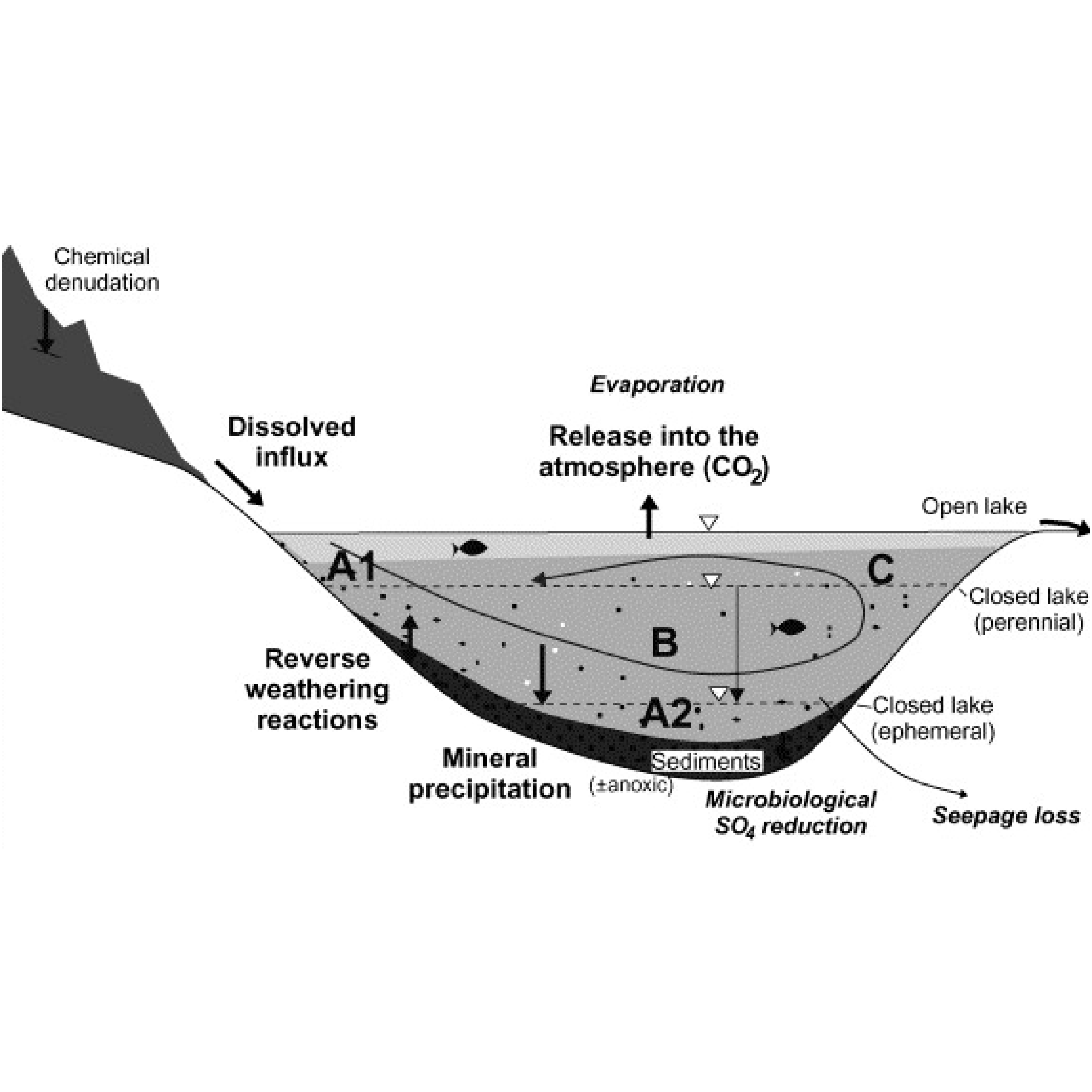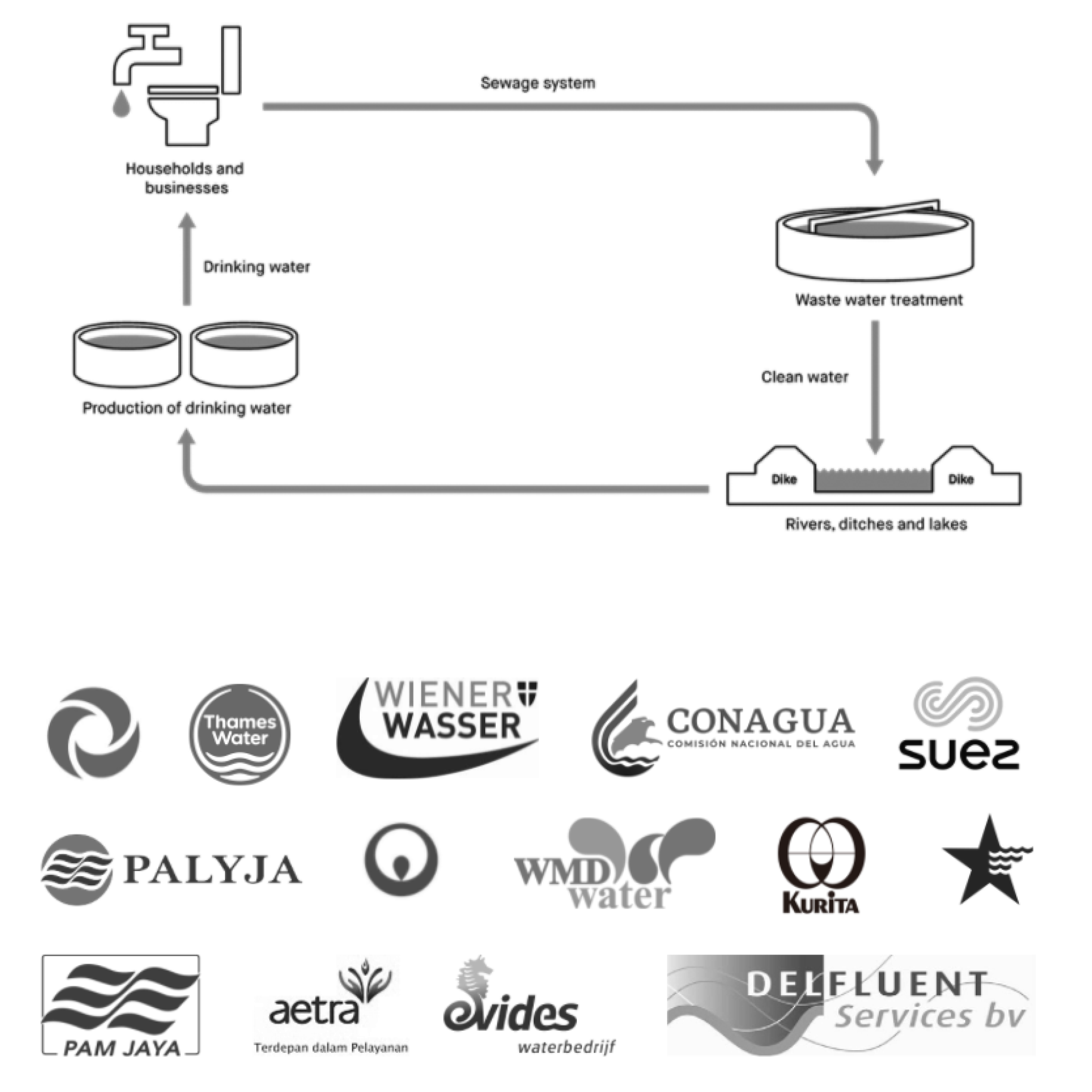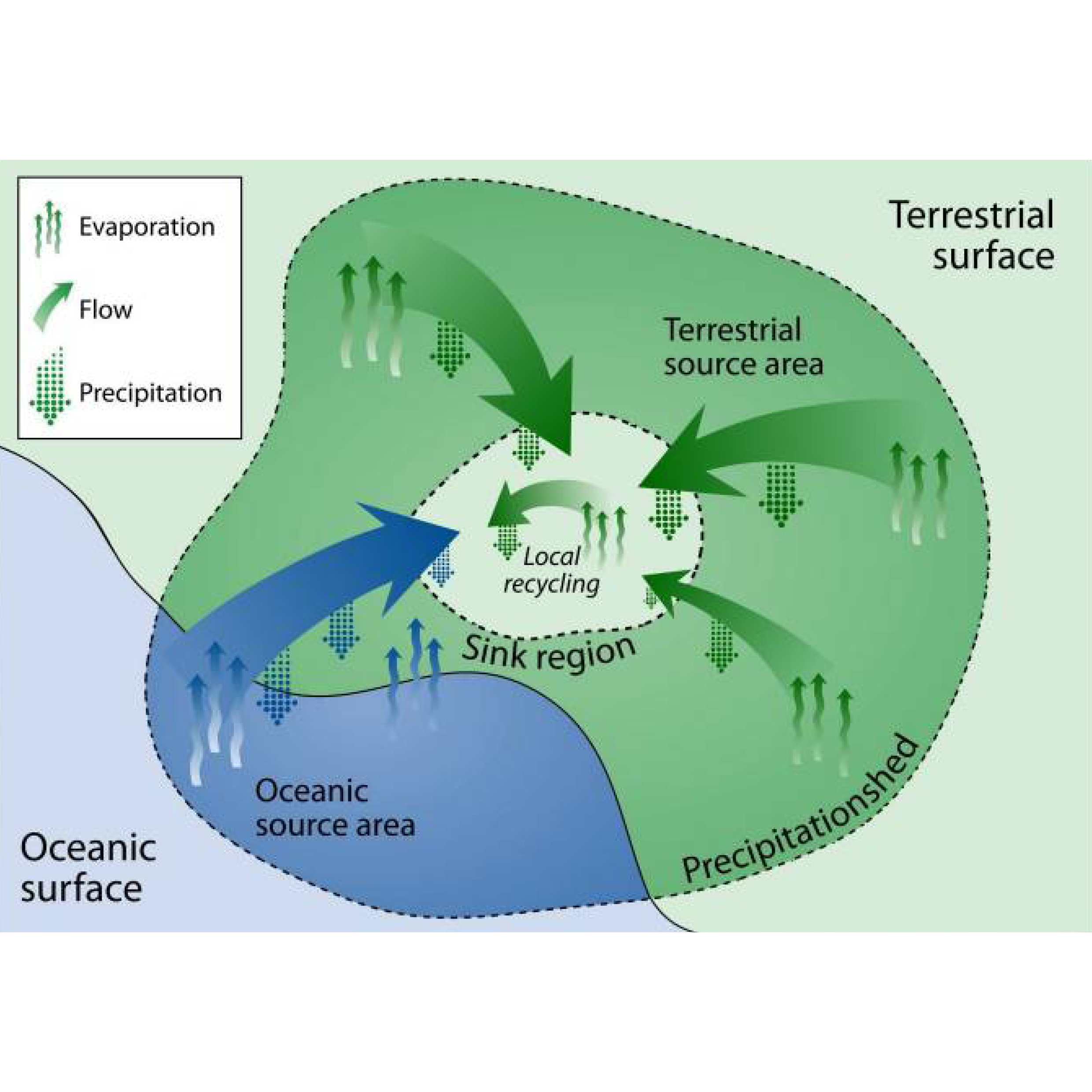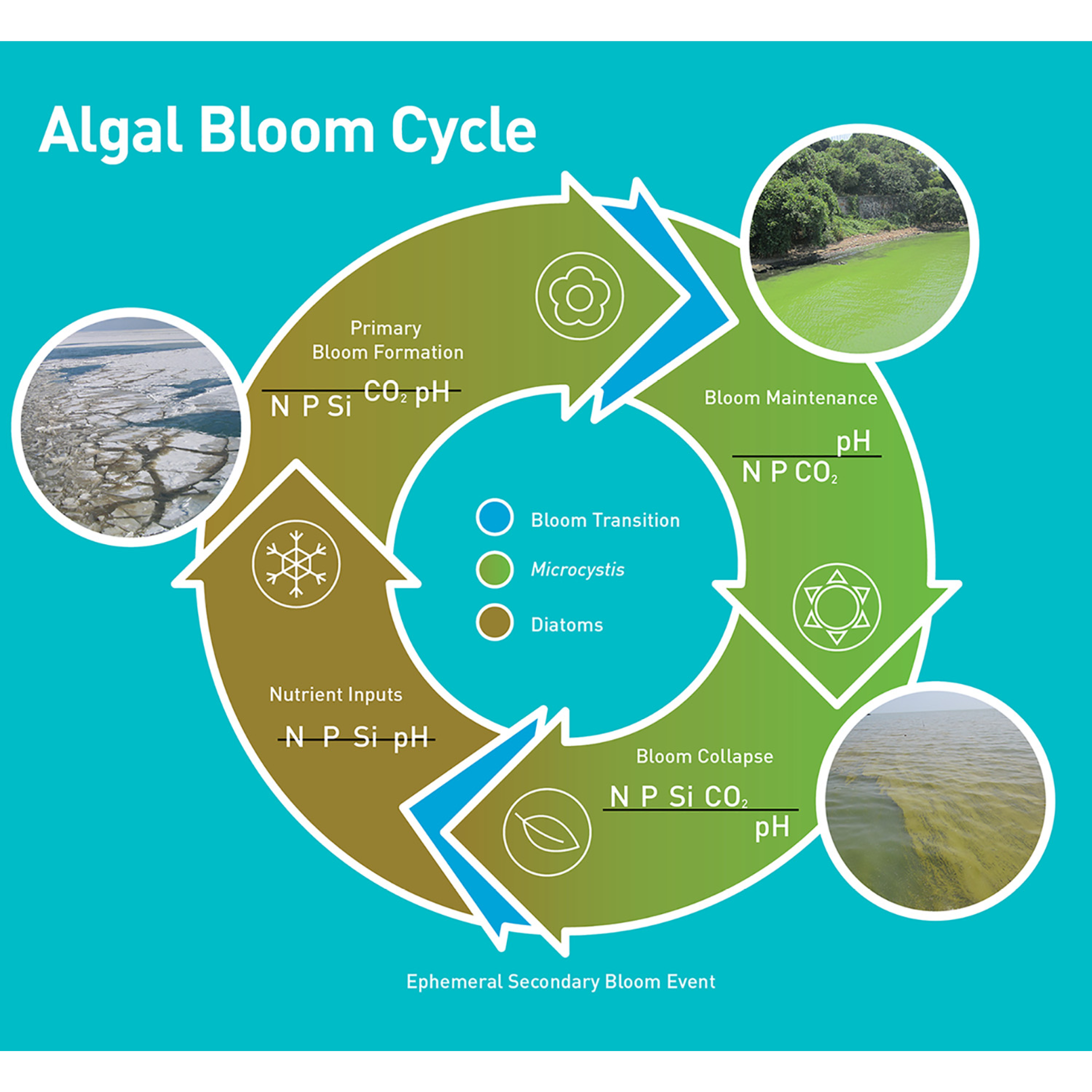
Lake Neusiedl is an example of an endorheic basin in that it retains water and allows no outflow to other external bodies of water. The lack of outflow is from the basin’s floor dropping more rapidly than water and sediments can accumulate. At the center of each basin, the endorheic lake, is a collection of water or sink that has no evident outlet. Lake Neusiedl is the largest in central Europe. Endorheic basins’ watersheds are often confined by natural geologic land formations, such as mountains, that cut off water egress to the ocean or a large body of water. Endorheic basins, including Lake Neusiedl, typically have to be treated to be used for drinking water since their inland water flows into dry watersheds where the water evaporates. This process leaves a high concentration of minerals that causes the lake to become more saline over time.
In humid areas, the basins tend to be marshy. These areas, such as Mexico City, have endorheic basins that are subject to substantial flooding in wet years and characterized by waterlogged soils that require draining. In areas where rainfall is higher, erosion will generally carve drainage channels or cause the water level in the terminal lake to rise until it finds an outlet. In deserts, the water inflow is low and large amounts of water is lost from solar evaporation, reducing the formation of drainage systems. In extreme cases, the basin will become arheic.
With limited precipitation but high potential evaporation, water storage is vulnerable to subtle flux perturbations, such as Lake Neusiedl, which has dried up over a 100 times . For this reason basins have been drained by humans, temporary farmed, or their natural cycle has been converted to an artificially dominated nature‐social water cycle in order to control the basins. Today, Lake Neusiedl’s water level is controlled by an artificial outflow, the Einserkanal, and a sluice in Hungary by the Austro-Hungarian water commission. Minor fluctuations of the lake's level continue to occur making the equilibrium sensitive to climate change. There has been a recent decline in enhoreic water storage which is exacerbated by global warming and human activities.
Processes controlling the geochemical evolution of closed-basin lakes.
Sources: J.P Yan, M Hinderer, and G Einsele, “Geochemical Evolution of Closed-Basin Lakes: General Model and Application to Lakes Qinghai and Turkana,” Sedimentary Geology (Elsevier, October 23, 2001), https://www.sciencedirect.com/science/article/pii/S0037073801002123.
Sources: J.P Yan, M Hinderer, and G Einsele, “Geochemical Evolution of Closed-Basin Lakes: General Model and Application to Lakes Qinghai and Turkana,” Sedimentary Geology (Elsevier, October 23, 2001), https://www.sciencedirect.com/science/article/pii/S0037073801002123.
- Mary Guiden, “World's Largest Cities Depend on Evaporated Water from Surrounding Lands,” Colorado State University (Colorado State University, March 13, 2018),
-
Patrick W. Keys, Lan Wang-Erlandsson, and Line J. Gordon, “Megacity Precipitationsheds Reveal Tele-Connected Water Security Challenges,” PLOS ONE 13, no. 3 (2018), https://doi.org/10.1371/journal.pone.0194311.
-
G. Ragette , “The Evaporation of Rain and Snowfall in the Subcloud Layer,” Physics and Chemistry of the Earth, Part B: Hydrology, Oceans and Atmosphere 24, no. 6 (1999): pp. 619-622, https://doi.org/10.1016/s1464-1909(99)00054-4.

Drinking water company usually covers a part or whole water cycle of a city. In the case of Vienna, Wiener Wasser covers the whole water cycle with 100% spring water from the Lower Austrian-Styrian Alps. Wiener Wasser is a part of the municipal department in Vienna responsible for clean water supply, maintain and control the quality of the water and pipelines, manage public sewage systems, wastewater treatment, and education around drinking water.
Another public drinking company owned by the municipality such as Waternet in Amsterdam also covers similar responsibility to supply clean water and collection of wastewaters. While in another Dutch regions such as Delft, have Evides Waterbedrijf to manage their drinking water supply and Delfluent to manage sewers and wastewater treatment.
In London, a similar service is provided by a private drinking company called Thames Water. Thames Water is responsible for the public water supply and wastewater treatment in most of Greater London. The company has been through several takeovers by companies such as RWE (German utility company) and Kemble Water Holdings Ltd (Consortium).
Another type of drinking water service could be provided by the partnership between the public and private companies. For instance, Jakarta drinking water is being distributed by private companies in form of a 25-year concession agreement, in which both private companies (Palyja and Aetra) have to achieve universal service coverage and a reduction of water losses to 20 percent at the end of the concession period. (initially 46% and 61% respectively in 1998). Also, the municipality or government normally will have to buy all the shares from private companies at the end of the concession period.
In 2019, the Austrian Parliament passed a law enshrining the protection of drinking water resources in the Austrian constitution. Water privatization in Austria is thus henceforth unconstitutional.
← Back to Lexicon
Cycle of water diagram ; various logo of water company
Sources: Waternet. “Who We Are.” Wereld Waternet. Accessed May 2, 2021. https://www.wereldwaternet.nl/en/about-world-waternet/whoweare/.
- “Water Privatization.” Wikipedia. Wikimedia Foundation, March 12, 2021. https://en.wikipedia.org/wiki/Water_privatization.
- “Wiener Wasser.” zur Startseite der Stadt Wien, March 16, 2021. https://www.wien.gv.at/wienwasser/.
- Waternet. “Our Service Area.” Waternet. Accessed May 2, 2021. https://www.waternet.nl/en/about-us/our-service-area/.
- “Water Privatisation in Jakarta.” Wikipedia. Wikimedia Foundation, March 14, 2021. https://en.wikipedia.org/wiki/Water_privatisation_in_Jakarta.

Evaporation is the process of turning from a liquid into a vapour. Natural soils in the earth are characterised by their high evaporation rates. The greatest part of stormwater is discharged by evapotranspiration. With 19 of the 29 largest cities in the world depending on evaporation from surrounding lands for more than one-third of their water supplies, evaporation is more critical to help with the increase in urban population growth. Most of these cities rely on surface water from either direct rain runoff, snow or glacial melt. For example, Mount Patscherkofel in Austria, where the water vapor is recycled back by 2.5-3% of the local precipitation of the city of Innsbruck.
Moisture recycling occurs when water evaporates from the land and rises up into the atmosphere. This moisture then flows along prevailing wind currents through the atmosphere, falling out as precipitation elsewhere. Advances in global modeling track the atmospheric moisture flowing around the planet and can identify the specific locations where moisture enters the atmosphere as evaporation, and where it falls out as precipitation. For example, Vienna’s evaporation takes place in the summer with a mean annual evaporation between 450 mm and 650 mm for the Danube River.
A precipitationshed defines a spatial boundary enclosing upwind evaporative sources of downwind precipitation and receives precipitation from an upwind source and from within itself. There can be many buffers between precipitation falling in a watershed and the water that flows into a city’s pipes, including dam storage, transport via canals, and storage in local reservoirs. For Buenos Aires, the watershed encompasses the entire La Plata basin with high amounts of moisture recycling processes occurring within the basin itself. The cities with less buffers can receive more water from moisture recycling. Changing the amount of water or when it evaporates and flows up into the atmosphere in an area can have impacts for other places and people, such as large scale deforestation for farming. Reservoirs, treatment and desalination plants are potential safeguards to mitigate climate change for cities water management.
Moisture recycling occurs when water evaporates from the land and rises up into the atmosphere. This moisture then flows along prevailing wind currents through the atmosphere, falling out as precipitation elsewhere. Advances in global modeling track the atmospheric moisture flowing around the planet and can identify the specific locations where moisture enters the atmosphere as evaporation, and where it falls out as precipitation. For example, Vienna’s evaporation takes place in the summer with a mean annual evaporation between 450 mm and 650 mm for the Danube River.
A precipitationshed defines a spatial boundary enclosing upwind evaporative sources of downwind precipitation and receives precipitation from an upwind source and from within itself. There can be many buffers between precipitation falling in a watershed and the water that flows into a city’s pipes, including dam storage, transport via canals, and storage in local reservoirs. For Buenos Aires, the watershed encompasses the entire La Plata basin with high amounts of moisture recycling processes occurring within the basin itself. The cities with less buffers can receive more water from moisture recycling. Changing the amount of water or when it evaporates and flows up into the atmosphere in an area can have impacts for other places and people, such as large scale deforestation for farming. Reservoirs, treatment and desalination plants are potential safeguards to mitigate climate change for cities water management.
Wershed of the sky that identifies the origin of precipitation falling in a given region.
Sources: Patrick W Keys, Lan Wang-Erlandsson, and Line J Gordon, “Megacity Precipitationsheds Reveal Tele-Connected Water Security Challenges,” PloS one (Public Library of Science, March 13, 2018), https://www.ncbi.nlm.nih.gov/pmc/articles/PMC5849328/.
Sources: Patrick W Keys, Lan Wang-Erlandsson, and Line J Gordon, “Megacity Precipitationsheds Reveal Tele-Connected Water Security Challenges,” PloS one (Public Library of Science, March 13, 2018), https://www.ncbi.nlm.nih.gov/pmc/articles/PMC5849328/.
- Mary Guiden, “World's Largest Cities Depend on Evaporated Water from Surrounding Lands,” Colorado State University (Colorado State University, March 13, 2018), https://source.colostate.edu/worlds-largest-cities-depend-on-evaporated-water-from-surrounding-lands/.
-
Patrick W Keys, Lan Wang-Erlandsson, and Line J Gordon, “Megacity Precipitationsheds Reveal Tele-Connected Water Security Challenges,” PloS one (Public Library of Science, March 13, 2018), https://www.ncbi.nlm.nih.gov/pmc/articles/PMC5849328/.

A phenomenon that occurs when due to human activities, a species has access to more nutrients than normal, causing a bloom in population. This leads to an imbalance in the ecosystem that is detrimental to other species.
The Algae Bloom, in particular, is one resulting from cultural eutrophication, where the two main contributors of minerals and nutrients into the water are raw sewage and agriculture. However, any usage including recreational use can contribute to this process and is one that has occurred historically. Eutrophication, most commonly the accumulation of phosphate and nitrate, occurs naturally and any human presence has meant the existence of cultural eutrophication. Say in the medieval era, the effects of this accumulation may have been no less than it is now, but a change did occur in that the effects are no longer localized and the Algae Blooms are being seen at a global scale. This is partially due to densification of population and industrial fertilizer use, however of note is the movement of nutrients in the form of food which also has a water amount attached in terms of production. Beyond the globalizing nature of agriculture, animal husbandry contributes to this process in the form of animal sewage along with any fertilizers used to produce any feed, most of which ends up in the water cycle.
As water tends to end up in the ocean, coastal and delta areas tend to be the most impacted by Algae Blooms, but areas with low water exchange like an Endorheic Basin are also particularly susceptible. Additionally, with the fracturing of the water cycle through dams, sewers, and globalized sources of phosphorus like the Kola Peninsula, the effects and contributions to Algae Blooms can reach far inland. However, cultural eutrophication in itself is a natural part of human existence and phenomenon such as the “Red Tide” are from extreme cases resulting from an incomplete biogeochemical water cycle.
← Back to Lexicon
Seasonal bloom cycle of a cyanobacteria, Microcystis, that is prevalent in freshwater
Sources: Wilhelm, Steven W., George S. Bullerjahn, and R. Michael L. McKay. "The Complicated and Confusing Ecology of Microcystis Blooms." mBio 11.3 (2020): e00529-20. Web. 03 May. 2021.
Sources: Wilhelm, Steven W., George S. Bullerjahn, and R. Michael L. McKay. "The Complicated and Confusing Ecology of Microcystis Blooms." mBio 11.3 (2020): e00529-20. Web. 03 May. 2021.
- Wassmann, Paul. (2005). Cultural eutrophication: perspectives and prospects. Drainage Basin Inputs and Eutrophication: An Integrated Approach.

Vienna was subjected to a growing population by the mid-19th century and required better hygiene and public conveniences with the improved knowledge of diseases. The Vienna City Council founded the Urinal Commission in 1863 to install public toilet facilities throughout the city. Johann Gottlieb Wilhelm Beetz, a German-Austrian building contractor, offered a 25-year contract to the City of Vienna in 1880 to build public toilets modelled on the lavatories of Berlin. There were several protests by the population against building public toilets in the Ringstrasse, resistance by the Schottenstift- a Benedictine monastery, objections from the church authorities which limited the construction in several proposed locations. After several heated discussions and compromises, the proposal got accepted, and the Beetz company built seventy-three facilities in Vienna by 1910, and operated around 200 toilets and urinals till the 1930s.
The first model of toilets, also called Closet-Hauschen, were small wooden houses with cabins for men and women that soon turned out to be lucrative and were described as "practical, quite comfortable and luxuriously furnished". The municipality wanted public toilets to be camouflaged as street furniture, as a result of which, Beetz replaced wood with iron and glass in his design of the public lavatory on the Parkring; fashioning it in a Secessionist style and implementing the form of the waiting halls of the Viennese horse tramway. In 1904, Beetz built the first underground public toilet in Graben based on the architect Franz Krasny's plans in an attempt to make these toilets even more discreet. The underground structure of 14.5 × 7.7 meters with a height of 3 meters is the last existing public Art-Nouveau toilet in Vienna which can be accessed via two staircases with corresponding labels to separate the genders and adorned with two gas lanterns which doubled as ventilation chimneys. Beetz invented the oil siphon in 1883 where the metal urinal in toilets is coated in a special oil containing disinfectant, the 'urinol'. The use of urinol saved water flushing and kept the odours out, creating an early form of the dry urinal for which he received numerous well-deserved honours. In 1903, the City of Vienna decided to switch to these dry urinals to prevent damage in the water flushing systems during winters.
Vienna has always been immersed in art and culture, even in its most banal structures of public toilets built by Wilhelm Beetz listed as monuments, some of which are open for public use even today.
← Back to Lexicon
The first model of toilets, also called Closet-Hauschen, were small wooden houses with cabins for men and women that soon turned out to be lucrative and were described as "practical, quite comfortable and luxuriously furnished". The municipality wanted public toilets to be camouflaged as street furniture, as a result of which, Beetz replaced wood with iron and glass in his design of the public lavatory on the Parkring; fashioning it in a Secessionist style and implementing the form of the waiting halls of the Viennese horse tramway. In 1904, Beetz built the first underground public toilet in Graben based on the architect Franz Krasny's plans in an attempt to make these toilets even more discreet. The underground structure of 14.5 × 7.7 meters with a height of 3 meters is the last existing public Art-Nouveau toilet in Vienna which can be accessed via two staircases with corresponding labels to separate the genders and adorned with two gas lanterns which doubled as ventilation chimneys. Beetz invented the oil siphon in 1883 where the metal urinal in toilets is coated in a special oil containing disinfectant, the 'urinol'. The use of urinol saved water flushing and kept the odours out, creating an early form of the dry urinal for which he received numerous well-deserved honours. In 1903, the City of Vienna decided to switch to these dry urinals to prevent damage in the water flushing systems during winters.
Vienna has always been immersed in art and culture, even in its most banal structures of public toilets built by Wilhelm Beetz listed as monuments, some of which are open for public use even today.
← Back to Lexicon
Drawings of the first underground public toilet in Graben next to the Josefsbrunnen.
Sources: “Öffentliche Bedürfnisanstalt am Graben”, Wikipedia, May 25, 2019, https://de.wikipedia.org/wiki/%C3%96ffentliche_Bed%C3%BCrfnisanstalt_am_Graben
- “Wilhelm Beetz (Bauunternehmer)”, Wikipedia, May 23, 2019, https://de.wikipedia.org/wiki/Wilhelm_Beetz_(Bauunternehmer)
- “Vienna at Your Convenience: A History of Public Toilets: Archives: The Vienna Review”, Archives | The Vienna Review, accessed May 03, 2021, https://www.theviennareview.at/archives/2012/vienna-at-your-convenience-a-history-of-public-toilets-2
-
“Toilets of Vienna: A Flush of Relief”, Metropole, November 20, 2019, https://metropole.at/toilets-of-vienna-a-flush-of-relief/